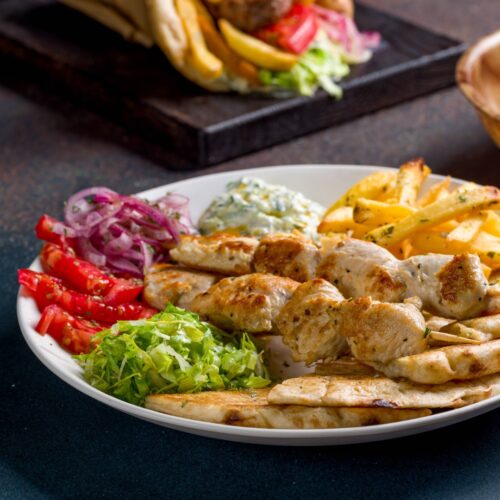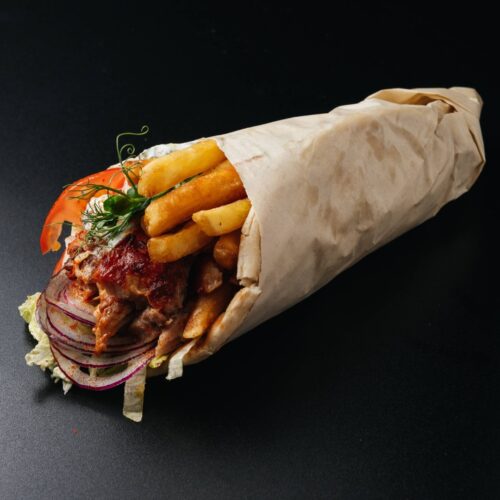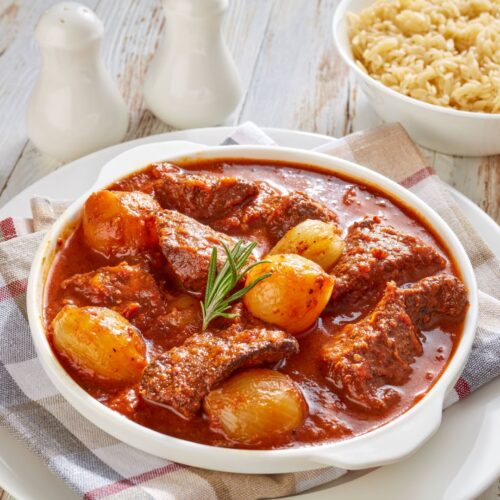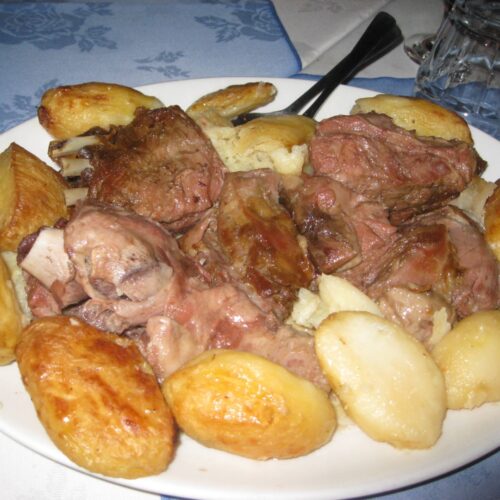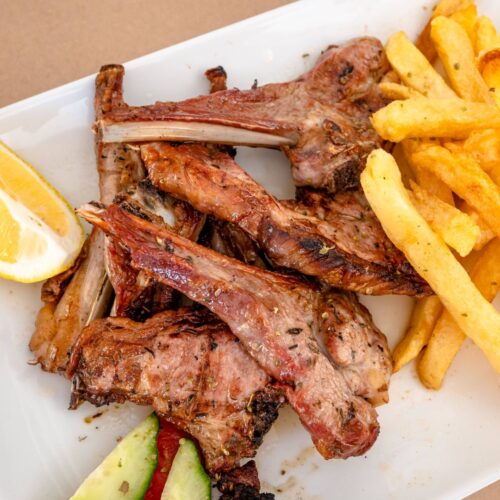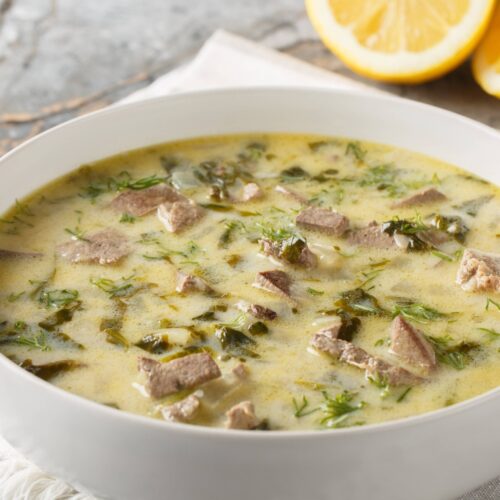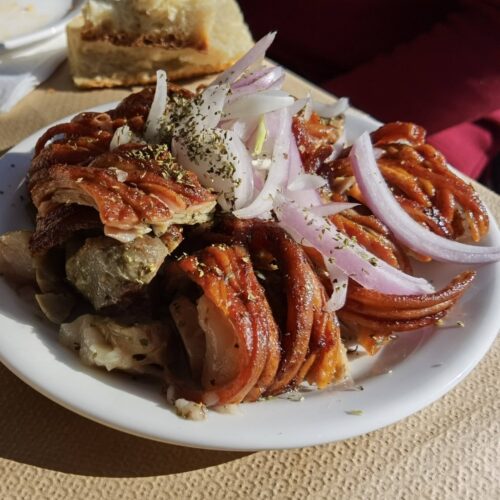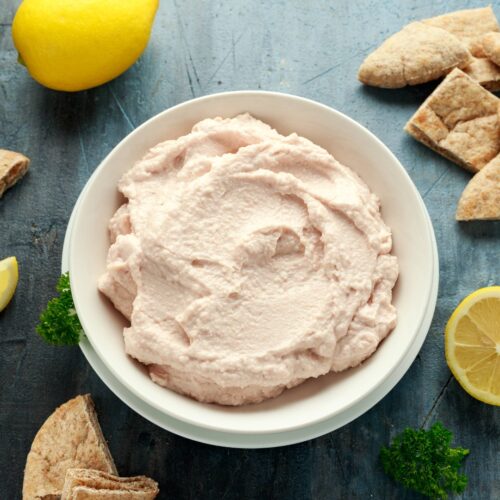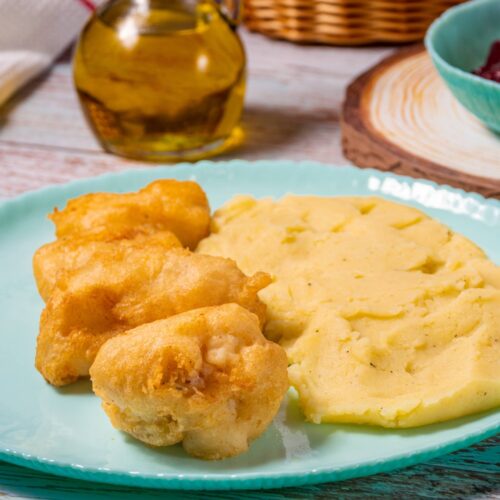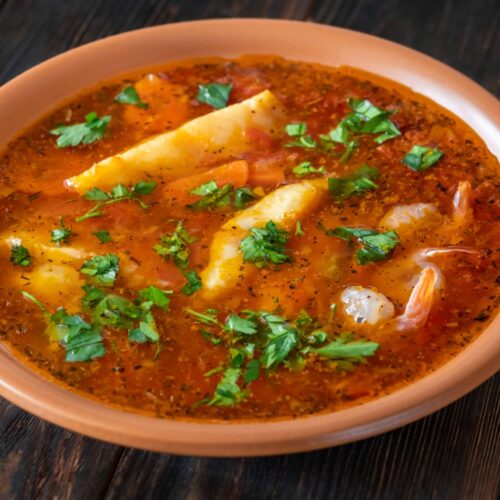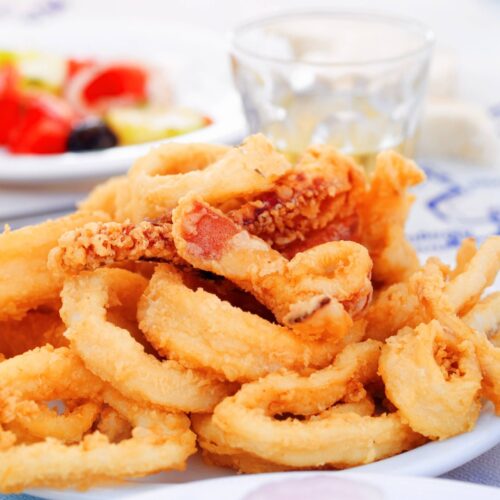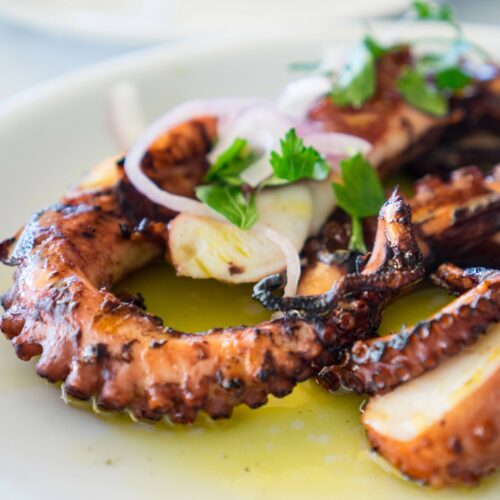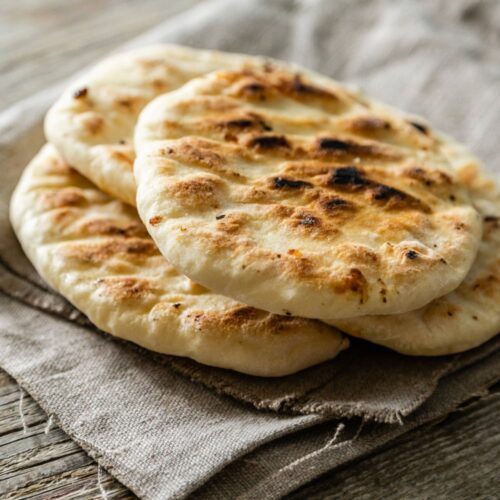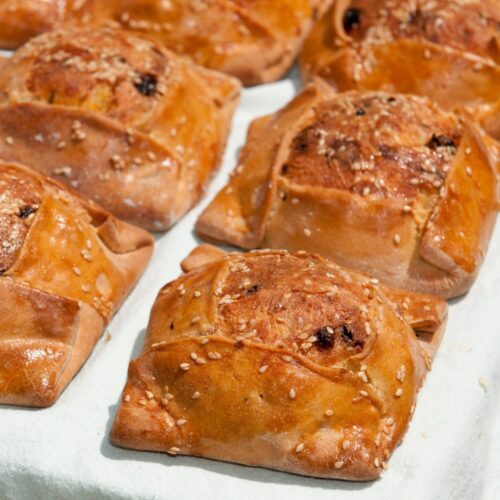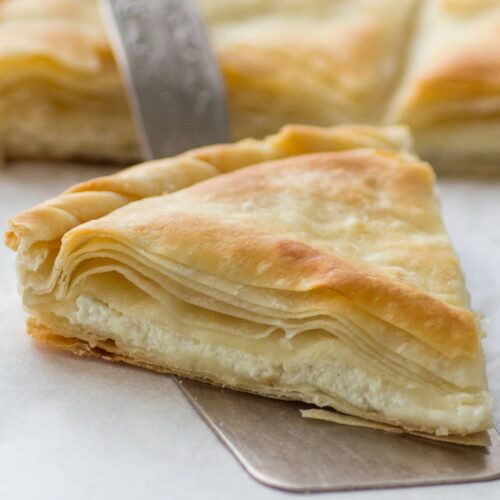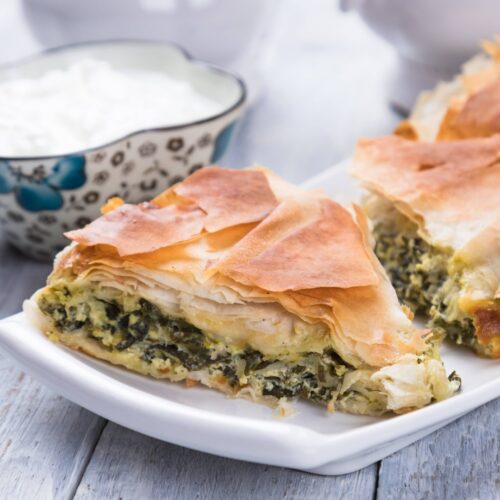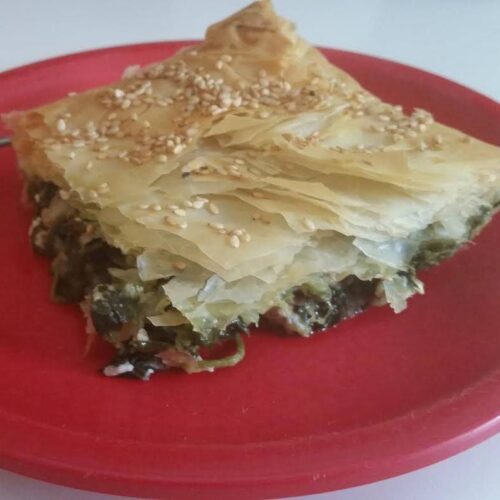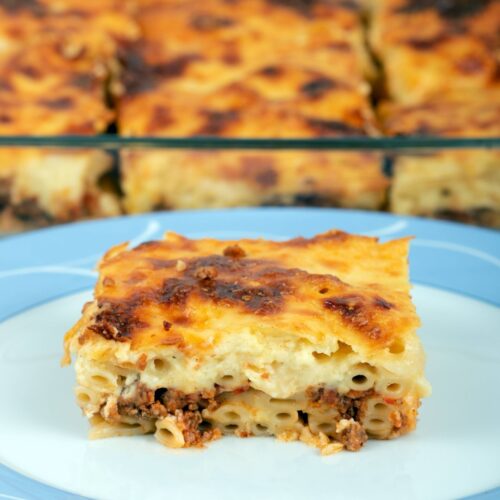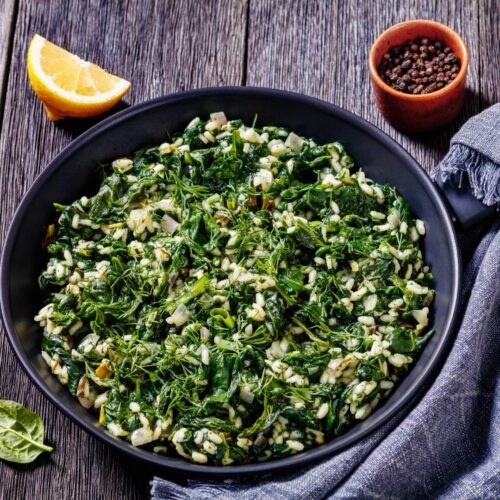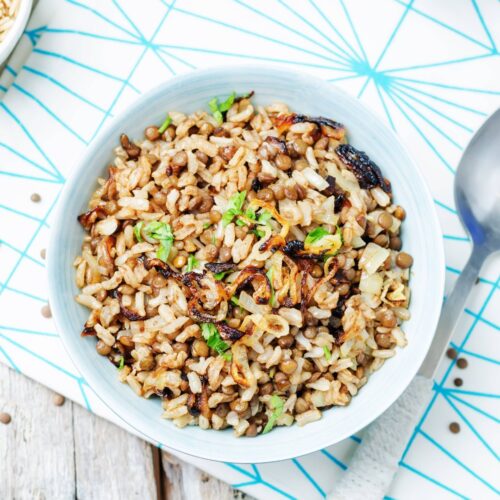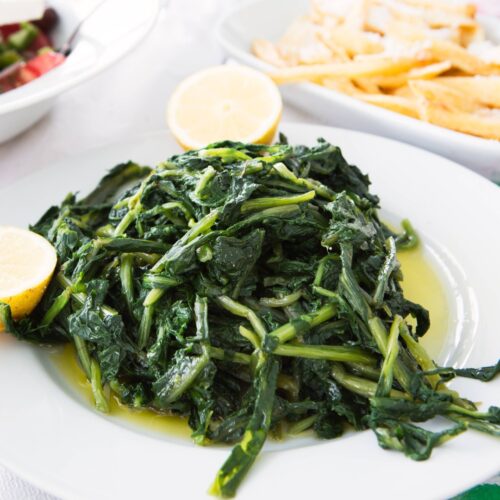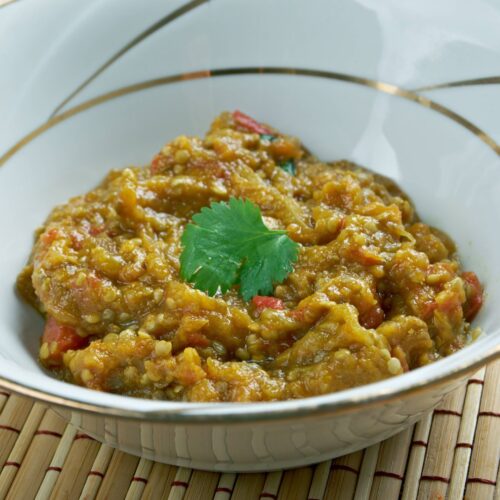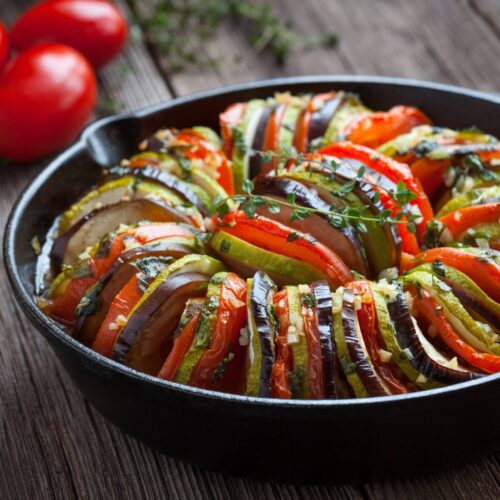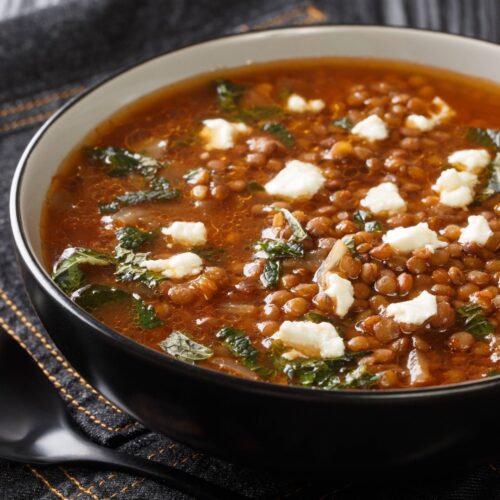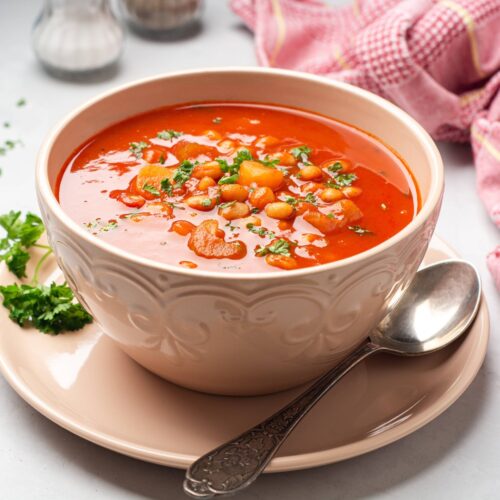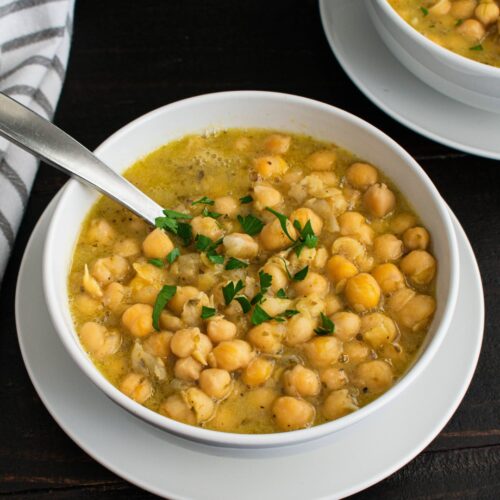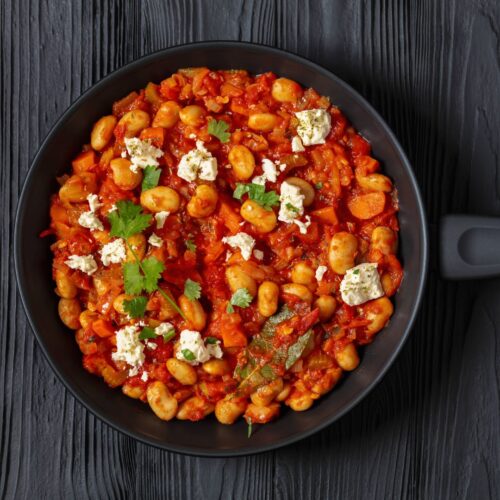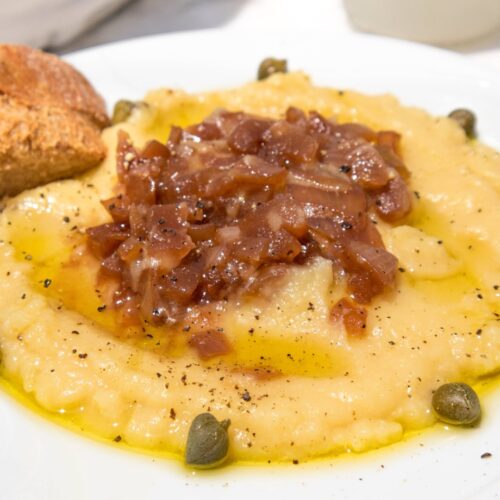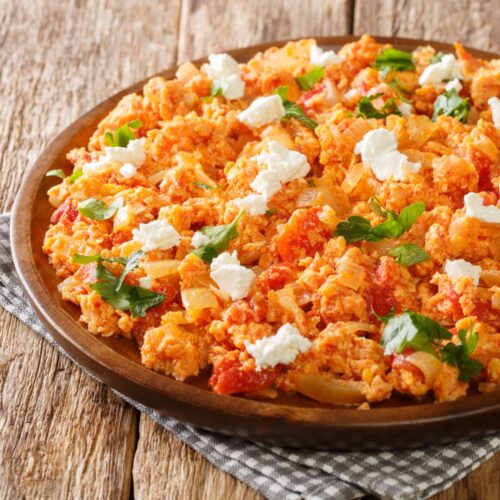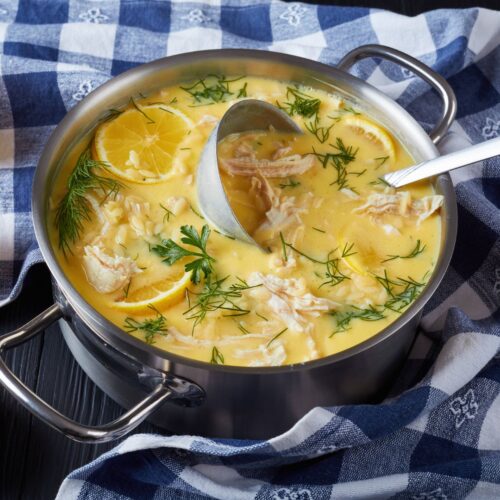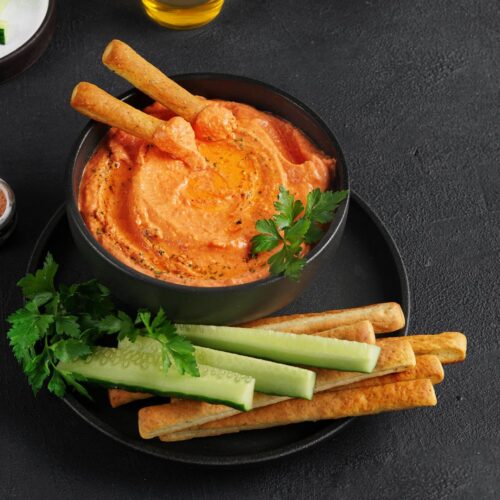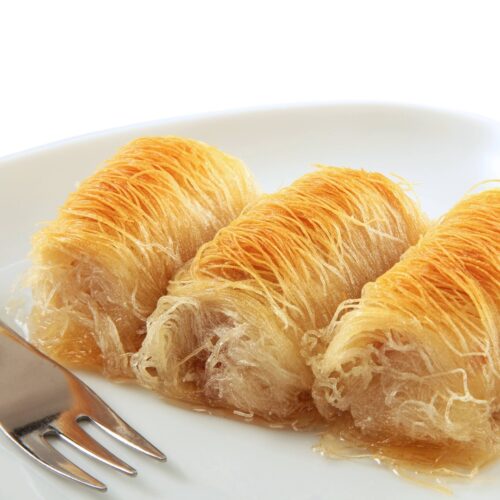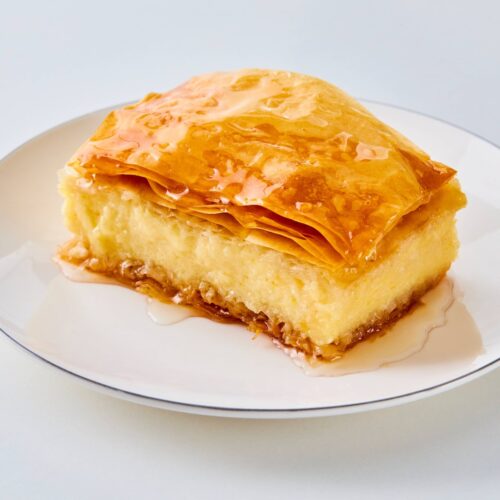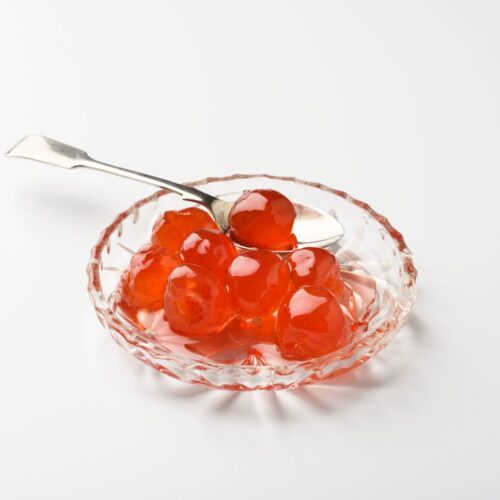Greek meal practices are defined by community, simplicity, seasonality, and celebration. One example of this is the meze culture, which, much like in the Middle East, plays a central role in Greek social gatherings. In Greece, meze is served with ouzo, tsipouro, or wine in a more laid-back, social setting. These small bites – ranging from tzatziki, gemista, feta with honey, to grilled octopus and spanakopita – emphasize local herbs, olive oil, and the simplicity of fresh ingredients.
For breakfast and snacks Greeks prefer various bakes – cheese, spinach, cream pies, breads, cereals with yogurt. The midday meal, the biggest of the day, traditionally consisted of vegetable stew or casserole with cheese, bread, salad, and wine, and some meat or fish for the more affluent. Afternoon coffee developed traditions in the old days when Greeks would have a nap after lunch within the hot hours; now, the nap is rarely taken, but the coffee habit remains. Dinner is rather late, starting from 9 pm, and is usually lighter if a substantial lunch is taken.
GRAINS IN GREEK CUISINE
Grains have been foundational to Greek cuisine since antiquity. Wheat is a central cereal primarily used in the form of various breads. Both thick horiatiko, psomi, tsoureki and flat pita, lagana are popular. Phyllo pastry, a Greek and Middle Eastern specialty, consists of skinny sheets of unleavened dough stretched to achieve exquisite thinness. When used in recipes, multiple layers of sheets are brushed with melted butter or oil to achieve a crisp texture upon baking.
Another use of wheat is as a comfort food, hilopites, Greek pasta, resembling flat, square-shaped pieces, often homemade and cooked in rich tomato sauce with chicken or lamb.
In Greek cuisine, rice isn’t as essential as in some other cuisines, but it does bring diversity in flavors and textures. It’s used as a filling for tomatoes, bell peppers, and grape leaves, in soups, and in pilafs (though bulgur is also used in pilafs), often seasoned with fresh herbs, olive oil, and lemon. The use of other cereals is minimal.
PRODUCE IN GREEK CUISINE
Veggies and Greek cuisine are inseparable – they are the health and nutritional essence of culinary tradition. Rather than being relegated to side dishes, vegetables take center stage, either as the main ingredient or in connection with meats and grains. The most frequently used are tomatoes; they are the base of many sauces and are the star of gemista and Greek salad, where they meet cucumbers, olives, and feta cheese. Eggplants are often grilled, baked, or fried, mashed into a popular smoky eggplant dip, melitzanosalata. Zucchinis you may find stuffed with rice and herb mixture or transformed into fritters known as kolokithokeftedes. Roasted peppers might be used in salads, spreads, or served as accompaniments. Spinach, dandelion, and amaranth greens are of widespread use. While okra is more commonly associated with cuisines of the American South, the Middle East, and Africa, it also finds its place in Greek kitchens; here, it is known as bamies.
Greek cuisine stands out for its minimalist approach to pulse preparation. They cook them in olive oil to bring out the natural flavors and season mainly with garlic, onions, tomatoes, oregano, and lemons, while neighboring cuisines incorporate more spices. The cuisine features brothy pulse soups (fasolada, fakes), stews (revithada, gigantes plaki), and salads (revithosalata).
Greek cuisine is rich in potato recipes, where potatoes are both a main dish and an accompaniment. One of the simplest methods is to dress peeled potatoes with olive oil, oregano, and lemon juice and roast them in the oven – this dish, patates sto fourno, is a staple at many Greek tables. You may be surprised to find lemon as a potato flavoring, but in Greece, it’s expected, giving the dish a tangy and fresh note. Potatoes are also widely used in various other dishes, such as skordalia, a garlicky mashed potato dip, casseroles, potato salads, stews, and more.
Lemon in Greece is a key ingredient in almost everything – it adds the iconic flavor this cuisine is known for. Lemon is to Greek cuisine what curry is to Indian food or soy sauce is to Asian cuisines.
Grapes are consumed fresh, but sun-dried raisins are also added to pastries, bread, or rice dishes. Part of the harvest goes to wine production. Greek wine has all the qualities needed to become more popular worldwide, but a combination of historical disruption, limited export infrastructure, and stiff competition from well-established wine regions has limited its global reach. In recent years, there has been a growing recognition of Greek wines, especially in niche markets and among sommeliers.
Grapes are also sun-dried to produce raisins and are added to pastries, bread, or rice dishes.
Glyko tou koutaliou refers to a wide range of fruit preserves, where fruits like cherries, bitter oranges, or grapes are transformed into spoon sweets, served with a glass of cold water or atop creamy yogurt.
MEATS IN GREEK CUISINE
In traditional Greek cooking, meat was something special – saved for Sundays and celebrations. These days, Greece is within the world’s top 20 for per‑capita consumption of sheep and goat meat, but when it comes to daily cooking, pork and chicken are the go-to proteins.
Lamb is the most iconic meat locally, especially during the Orthodox Easter, when whole lambs are roasted on spits. Dishes like kfeftiko rustic slow-cooked lamb, paidakia lamb chops, and lamb fricassee, braised with greens, are popular.
In the same rocky terrains, goats roam alongside sheep. They are loved and prepared similarly; the meat is flavorful and pairs well with wild herbs. Historically, after slaughtering an animal, it was vital to utilize every part to ensure nothing went to waste. This nose-to-tail tradition meant that offal also found its way into culinary traditions. For example, the dish kokoretsi, skewered and grilled offal, is a delicacy often enjoyed during Easter.
With the advent of Christianity in Greece, pork became more prominent as it wasn’t associated with ancient pagan rituals like lamb or beef; the relative ease of pig farming also contributed to its popularity. Pork is the primary meat for souvlaki (marinated meat grilled on a skewer) and gyro (roasted meat in pita with veggies).
FISH AND SEAFOOD IN GREEK CUISINE
The daily catch dictates menus in seaside tavernas, so the freshness of the catch is paramount in Greek seafood dishes. Fish preparation is super simple – often just olive oil, lemon, and oregano, and then grilled. Fish is often served whole, with the head, bones, and tail.
Among the Greek islands, seafood specialties feature sun-dried octopus, which you’ll often see hanging outside to dry. This method tenderizes the meat and imparts a unique dried flavor. Once dried, the octopus is grilled, becoming tender and smoky. Another specialty is salted cod bakaliaros fried in a beer or ouzo batter, served with a garlic and potato skordalia. While salted cod is consumed in other parts of the world, this particular combination is uniquely Greek.
Grilled sardines can be found in various cuisines, but the simple Greek preparation typically involves olive oil, lemon, and oregano. Taramosalata is a creamy and unique dip with a distinctive texture, flavor, and pink color, made from tarama fish roe, bread or potatoes, olive oil, lemon, and onions, and is full of umami. Kakavia, a traditional fisherman’s soup with ancient roots, is made with a variety of fish and sometimes shellfish. Unlike the creamy risottos of Italy, the Greek version of seafood risotto (rizoto me thalassina) often has a tomato base and features a mix of seafood like mussels, shrimp, and squid. It’s a bit lighter and more broth-like than its Italian counterpart and is made with olive oil, lemon, and simple seasonings.
MILD AND DAIRY IN GREEK CUISINE
Greeks absolutely love their milk – they actually consume more of it than anyone else in the Mediterranean! And, of course, there’s Greek yogurt, which has gained worldwide fame. Traditionally, it was made from sheep’s milk, though nowadays you’ll find plenty of cow’s milk versions as well. A general rule of thumb is that it takes about 3 to 4 liters of milk to produce 1 kilo of Greek yogurt. Because Greek yogurt is strained to remove much of its whey, it results in a denser, creamier, and velvety product with higher protein content than regular yogurt.
Greece’s mountainous, rocky landscape has always been perfect for sheep and goats rather than large herds of cows, so it’s no surprise that sheep cheese became king. The long history of cheese-making has led to the creation of feta, which translates to “slice.” It is a white, crumbly, skinless cheese aged in brine, giving it a tangy flavor. Feta is primarily made from sheep’s milk, although it can also contain up to 30% goat’s milk collected from specific geographical areas. It is one of the oldest cheeses in the world, dating back to the 8th century, and remains very popular in Greece, accounting for 70% of all cheese consumption.
Milk is used in desserts, such as galaktoboureko, a dessert made from semolina custard, and rizogalo, a traditional Greek rice pudding typically flavored with vanilla or cinnamon and made with milk.
OILCROPS, NUTS, AND SWEETS IN GREEK CUISINE
Olives thrive in Greece – one of the most well-known varieties is kalamata, the famous Greek type with an almond shape and a purple color.
With over 120 million olive trees in Greece, that’s roughly 11 trees for every resident in the country. The majority of the olive oil produced is of extra virgin quality, making it one of the highest percentages in the world. It’s mind-blowing to think about the impact of olives and olive oil on Greek cuisine. One of the most characteristic aspects of Greek food is ladera dishes. These are vegetables cooked slowly in olive oil with tomatoes and herbs, creating a rich, comforting meal. Dishes like briam, a roasted vegetable medley, or fasolakia, green beans in olive oil, are also examples of how olive oil is a core part of the meal.
Nuts grow abundantly throughout Greece; they are enjoyed raw and roasted as a snack, a crunchy addition to salads or pilafs, and in sweets. Nuts, especially almonds, hold religious significance in Greece. For instance, koufeta sugar-coated almonds are traditionally offered at weddings and baptisms.
Greek sweets focus on honey, nuts, phyllo dough, dairy, and aromatic spices, creating a balance between rich and light textures.
Many of Greece’s desserts, such as baklava, galaktoboureko, and kataifi, rely on phyllo dough soaked in honey or sugar syrup. The combination of crunchy layers with sticky syrup creates a signature texture central to Greek sweets. Greece’s strong dairy tradition plays a major role in desserts. Galaktoboureko custard-filled phyllo, rizogalo rice pudding, and yogurt with honey and walnuts are staples. Almonds, walnuts, and pistachios appear in many desserts: kourabiedes, almond shortbread cookies, and karidopita walnut cake are holiday favorites, while amygdalota almond macaroons are served at weddings. Greek sweets share similarities with Turkish, Middle Eastern, and Balkan desserts. Baklava, lokum, Turkish delight, and kataifi have parallel versions across regions, but Greek versions often use more citrus, cinnamon, and cloves.

